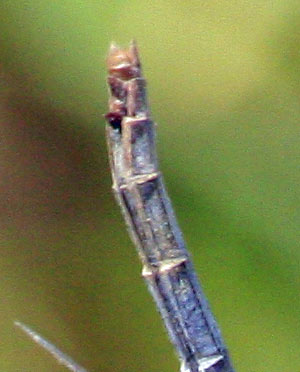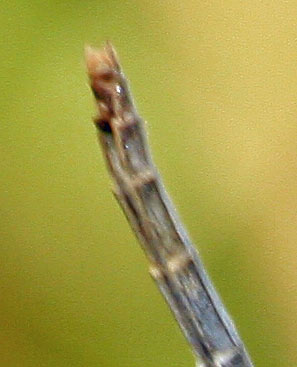
These female presumed Dragonlet Erythrodiplax sp. was photographed on a trail just yards from the Rio Grande between Bentsen RGV State Park and the NABA IBP property. It was seen in the late afternoon in very hot conditions, and persistently perched atop tall giant cane stems (10 - 20 feet high) in full sun rather than lower in the shade as were all the many E. umbrata in the general area. Assuming that it is an Erythrodiplax, not only is the behavior strange, but the combination of wing veination and subgenital plate/cerci structure seems closest to funerea...
A) all four radial planates (one per wing) have two row of cells; according to NW&M this reduces the choice to umbrata or funerea. The smaller species in NW&M have a single row of cells in this area (occasionally berenice has some doubled cells in the radial planate).
B) Of the illustrations of the terminal segments of females in NW&M, the closest match is that of funerea (based on the size/shape of the subgenital plate and the length of the cerci); all my references state that one distinctive feature of funerea compared to umbrata is that the former has some doubled cells (or cells split into two rows) in the medial planate:
- in the image below there is clearly one doubled cell in the FW medial planate (arrowed) :
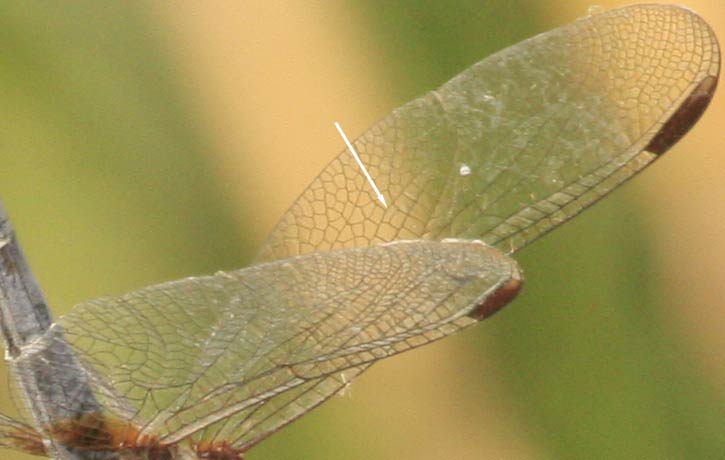
- now, in the different image below, note the relative visibility of the definite double cell in the forewing medial planate (arrow B) plus the band of doubled cells in the FW radial planate (arrow R); then look at arrow A - it seems to point to a row of three doubled cells on the HW medial planate:
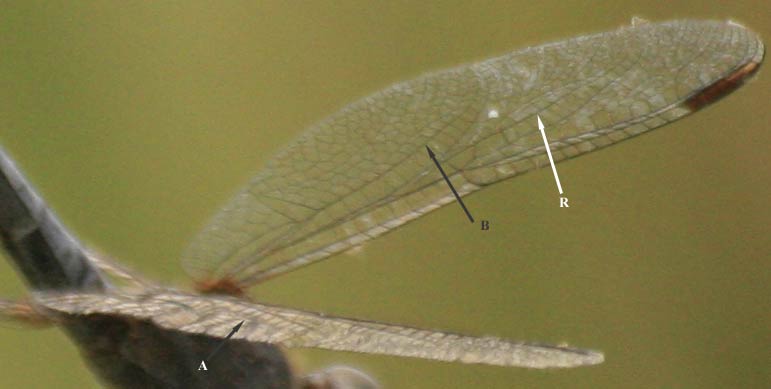
- here in a third photo, one can make the same relative comparison - the doubled cells indicated by arrow A are at least as visible as those in the forewing (B, R):
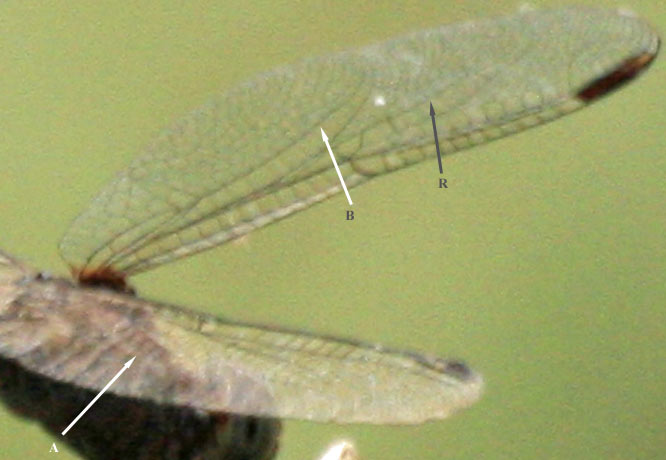
- so just how reliable is the "doubled cells in the medial planate" feature? Can umbrata ever have doubled medial planate cells? if so, how many??
note in the next two images the fairly large brownish patch at the base of the hindwings; some female funerea can have such patches, I think, but not umbrata...:
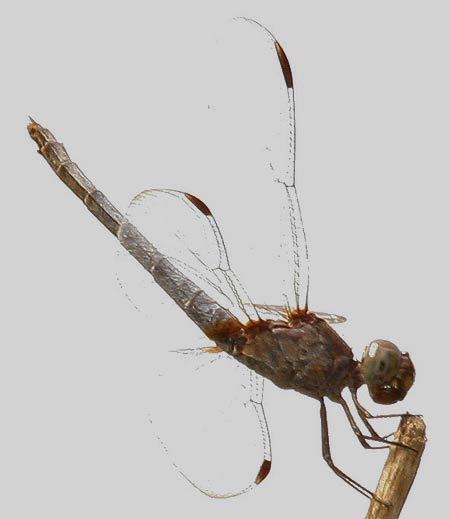
in the image below,
the underlying immature pattern of the abdominal segments can be discerned, and seems typical of umbrata - but does this in-of-itself rule out funerea?:
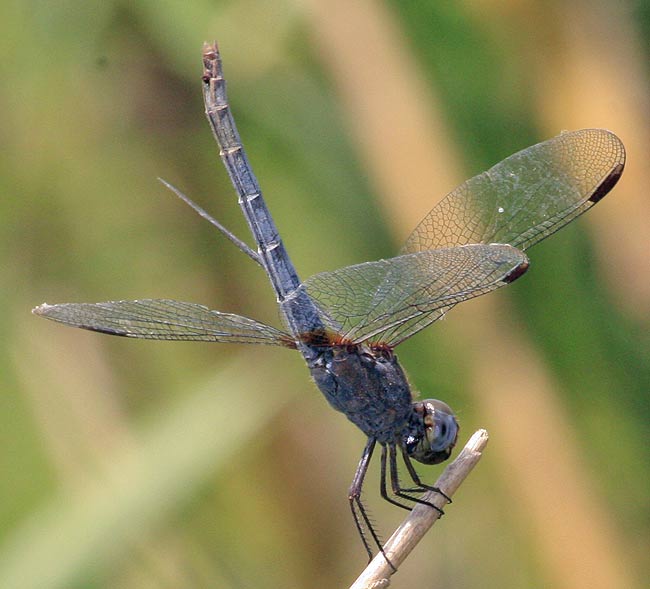
in the images below, the size and structure of the subgenital plate seems wrong for umbrata (too large and prominent) yet just about right for funerea:
